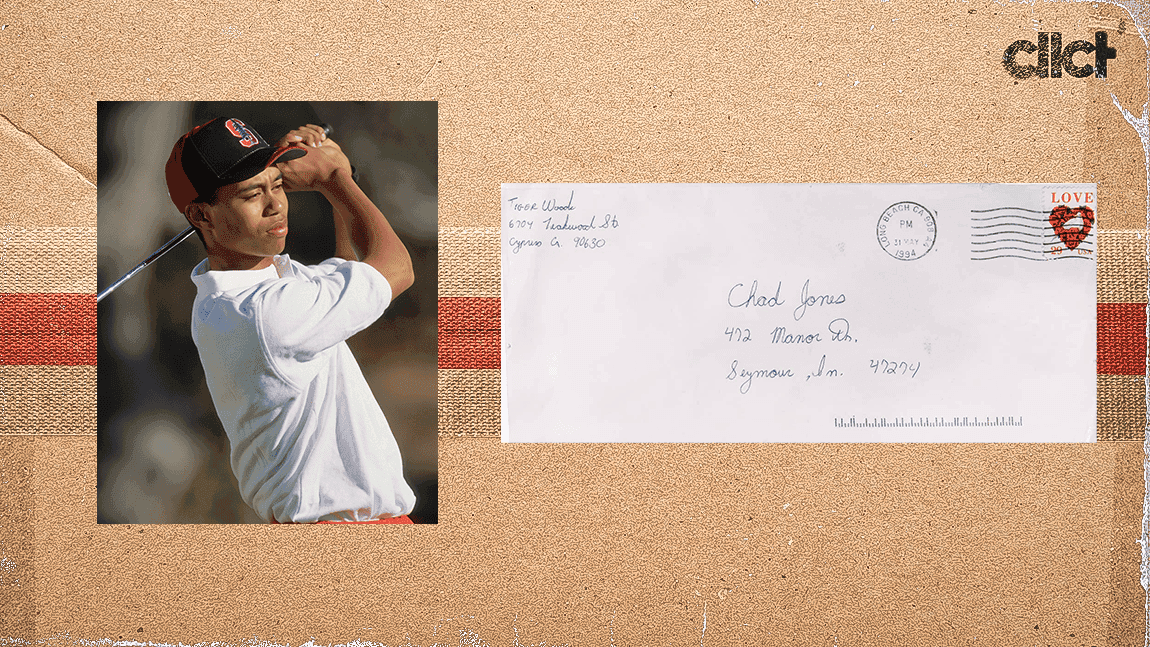Chad Jones was a high school sophomore in Seymour, Indiana, daydreaming about golf every day.
One winter day in 1994, Jones found an address to the childhood home of then-18-year-old Tiger Woods and decided to write the young golfer a letter.
Jones was particularly intrigued with how Woods, who by that time had played in a PGA Tour event and won three straight U.S. Junior Amateur titles, battled racism while getting to the top of what had been a sport traditionally dominated by white competitors.
In June, two months before Woods became the youngest golfer to win the U.S. Amateur, Woods sent a letter back to Jones. As part of the letter, Woods answered a question from Jones about the racial abuse he had encountered in the sport.
_"To Chad, I appreciate you taking the time and interest to write to me." Woods wrote in his own handwriting. "I completely agree with you that racism is unfortunately part of the game of golf. I am excited that you are writing on this topic because this is something that has been a significant part of golf and is something we should start talking about. _
"The answer to your first question is ‘You (slur redacted)’ and a death threat in my first tour event, the L.A. Open. These are not the only remarks of this kind. I have had other such remarks, but I just can’t seem to remember them clearly. This racist remark was brought on because I was a little black kid practicing at the Navy Golf Course.
"You have to understand that the Navy G.C. is mainly made up of retired Navy officers who are about fifty to eighty years old. Back when they were in the military the blacks were either cooks, porters, or low-ranking officers. Then comes along my father who is a retired lieutenant colonel from the Green Berets (a special forces group in the Army) who has the audacity to have a kid who can beat most of the membership and who just happens to be black. This brings on jealousy and from that, you can understand how this kind of statement can be made."
Jones, who got a golf scholarship to the IMG Academy and was coached by Tiger's future coach Hank Haney at SMU, kept the letter inside the original envelope in a Ziploc in a drawer for years and frequently showed it to friends.
This summer, Jones decided to put the letter on the auction block, and it sold for $25,620 on Monday night at Goldin Auctions.
Jones also decided all his proceeds from the auction will go to the Tiger Woods Foundation.
"I just thought how cool it would be to send a kid to college using Tiger's letter to me," Jones told cllct.
Jones said he met Woods at the 1995 NCAA Championship in Columbus, Ohio, which came a little more than year after he received the letter from the golfing great.
"He remembered me and the letter," Jones said.
Early Tiger signatures have proven to be valuable. In May, The Golf Auction sold what it says was the earliest authenticated Tiger signature — an application to play in a tournament in 1990 — for $8,764.
Darren Rovell is the founder of cllct.com and one of the country's leading reporters on the collectible market. He previously worked for ESPN, CNBC and The Action Network.

